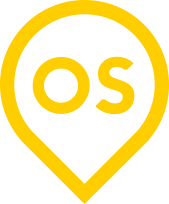The Future of IoT
The Jetsons, the beloved 1960’s television show, actually got a lot right when predicting the future. Especially in terms of technology. They showcased flat screen televisions, smart watches, talking alarm clocks, robotic cleaning systems, video chat, and even dog treadmills. All of which we have today.
So if we’ve already caught up with the Jetsons (minus the flying cars), then the question remains: What’s next?
To tackle this topic, we discussed the future with John McDonald, an entrepreneur who has been in the world of IoT since early 2009. Using his background from his time with IoT/data company, Clear Object, and his newest venture Next Studios, McDonald discussed what’s in store for our future. Luckily, it doesn’t just involve the typical Jetson family additions. It involves an entire change in how we think about product and consumer interaction.
Already on the rise, these three shifts are next:
Everyday objects will become software platforms.
Mechanical products will be obsolete, making way for all electrical.
Instead of simply creating and selling products, we will predominantly collect and sell data.
We’ve already begun to see these transitions working together in the automobile industry. The newest vehicles have navigation screens, rear-activation cameras, auto lane adjust, emergency braking and more. Autonomous cars are around the corner, combining all these components to make driving a non-existent chore. But at some point, according to McDonald, all cars will be “rolling software platforms that you sit in.” The Tesla 3 is only the newest example of this. It’s entirely electric - no buttons, switches, or knobs to be seen. The epitome of a software platform with wheels. It’s the transportation of the future.
The automotive industry isn’t the only industry where we can see these three fundamental changes in smart devices. These shifts may benefit those who put off going to the doctor the most.
A decade ago, medical devices were still electro-mechanical. Heart stents, blood pressure monitors, and many of the most important devices for checking your health relied heavily on mechanical innovation. Now we see a heavy shift towards electronic sensors to collect our medical data. Devices such as Apple Watch can take your temperature, monitor your heart rate, and take an EKG from your wrist - thus, collecting data that can be sent to a healthcare physician to be analyzed at a moment’s notice, at your easiest convenience.
Simply put: a wrist watch now is a medical device focused on data.
The next step into the future: doctors who are connected and able to see the data from your smartwatch and proactively monitor health from afar. For example, a health care provider will be able to check heart rates for weeks, noting irregularities or issues, before making the decision that their patient needs more extensive testing.
For many who are reluctant to go to the doctor, this kind of access could be life-changing, and more importantly, life-saving.
Toilets are even on the rise to become smart devices. It began for ease and safety, with researchers creating a motorized toilet for disabled or elderly that can detect if someone has fallen and adjusts the seat based on voice commands.
Now, a Japanese company is going one step further. “Flowsky” is a toilet used in hospitals that checks for issues in urine and stool samples, easing the burden on physicians and nurses to gather efficient data that can quickly indicate bladder or prostate problems.
Many are dreaming of a future in which these smart toilets would be in our homes. Instead of making an appointment and going to the doctor’s office, the porcelain throne could do the work of collecting and processing these samples. From the comfort of your home, doctors would receive this information, saving transportation costs and more importantly, time.
But with all of these new advancements, three hurdles arise:
Cultural acceptance
Regulatory laws
Technology itself
According to McDonald, the problem is usually less technological and more regulatory or cultural. For example, until the recent Covid-19 pandemic, a video chat with a doctor was not allowed. The technology of face-to-face communication has been available for years. It was only when necessary cultural acceptance shifted that regulatory laws adjusted to keep up to the technology.
It’s when all three of these hurdles are climbed that we will see the biggest growth and global change. While IoT advances at a sprint, if we are able to keep our cultural beliefs and laws updating at a similar pace, there are no limits when it comes to the future.

